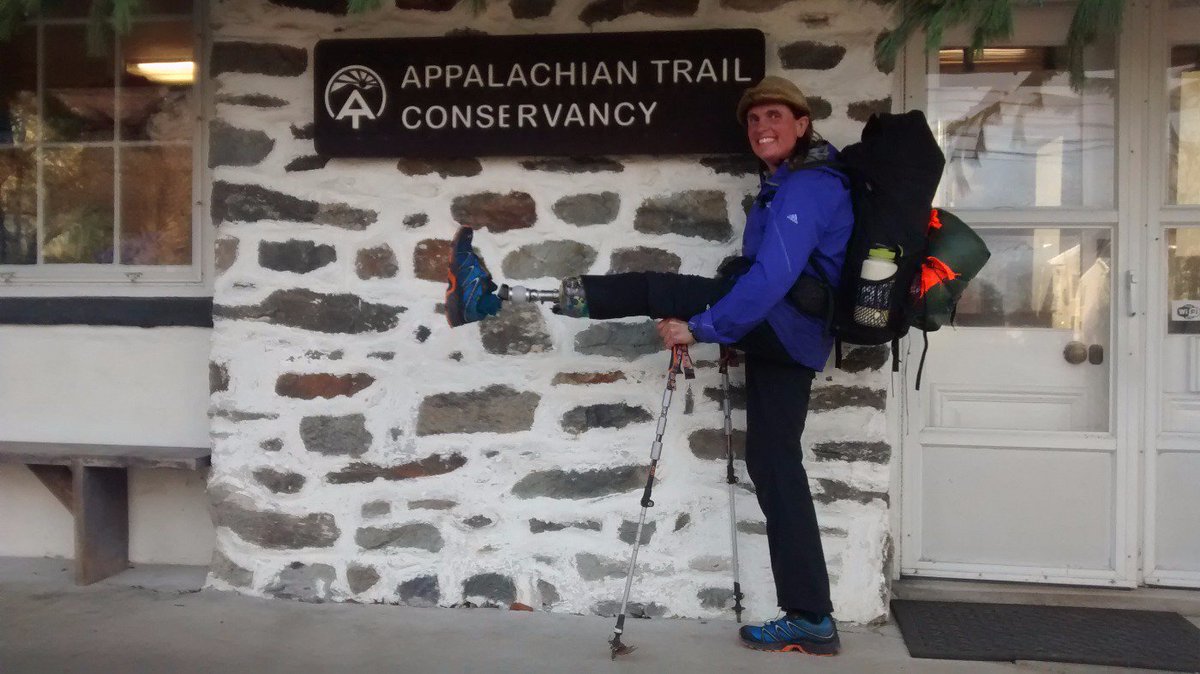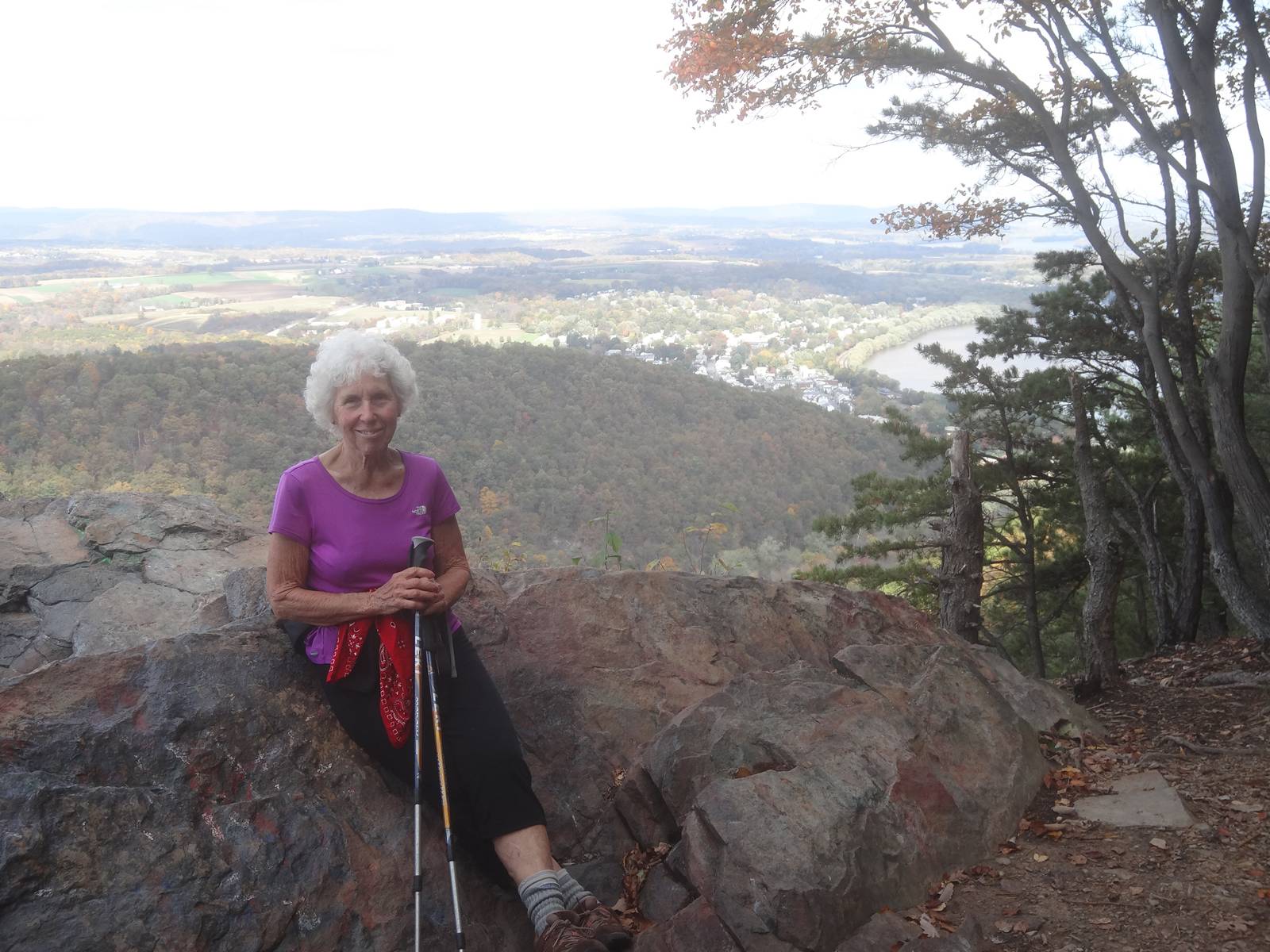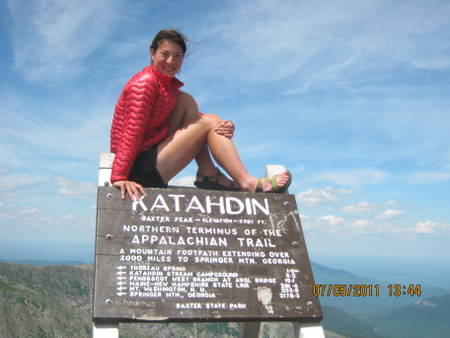7 More Women Who Made History on the Appalachian Trail
Last year, I wrote an article about seven incredibly influential women who hiked the Appalachian Trail. The list was hardly all-inclusive.
While the ATC reports approximately 25% of thru-hikers are female, that statistic is not reflective of the impact women have had on this trail. Historically women have long been trailblazers on the AT. Modern female hikers stand on the shoulders of giants like Grandma Gatewood and Jennifer Pharr Davis, and they continue to push forward towards new records, greater feats, and longer miles.

Niki Rellon is the first woman to hike the Appalachian Trail with a prosthetic leg.
Niki Rellon
Niki Rellon, known by her trail name “Bionic Woman”, made history when she completed her thru-hike on December 27, 2015, becoming the first woman to hike the Appalachian Trail with a prosthetic leg.
Less than two years earlier, Rellon lost her left leg when she fell in a canyoneering accident in Utah. “I broke my pelvic, broke my spine, shredded my entire left foot. It was so damaged, that we had to take it off. Devastating, 100 percent,” Rellon said in a TV interview with WCYB. Devastating indeed, especially since Rellon was a triathlete and had previously thru-hiked the Pacific Crest Trail.
The injury didn’t hold her back for long. Fourteen months after the amputation, the native German flew to Georgia and started walking north on the Appalachian Trail. Rellon spent nine months hiking the Appalachian Trail, slowly but surely gaining strength back in her leg. She completed her flip-flop in Glasgow, Virginia.
“Don’t let people tell you what your limitations are,” Rellon says, “Figure out what you can do for yourself.”

Nan Reisinger currently holds the record as the oldest woman to hike the Appalachian Trail. Photo via Duncannon ATC.
Nan Reisinger
When she was 74 years old, Nan Reisinger – aka “Drag’n Fly” – earned the record spot as the oldest woman to thru-hike the Appalachian Trail.
Reisinger hiked the trail with her friend, Carolyn “Freckles” Banjak. She credits Banjak as her inspiration to hike the Appalachian Trail. “We were on a hike at Harper’s Ferry … and Carolyn found out that the oldest woman was 71,” Reisinger said. “She said, ‘you could to that, and you cannot wait.’ I always wanted to do that and thought, ‘I can beat that.’”
The pair set off from Springer Mountain on March 30, 2014. It took them a little over six months to reach the northern terminus of the trail in Maine.
The journey was not without hardship; Reisinger tripped and hit her knee on a rock in Pennsylvania. The injury took her off the trail for an entire week. She lost 25 pounds during her hike, and considered herself lucky for the good weather she got in the tough sections of the trail in New Hampshire and Maine.
Reisinger also had to live by the “hike slow” dogma. “I couldn’t ever hike the real long miles like some younger people do, ” she said, “So we had to hike every day and not take breaks.”
Banjak and Reisinger saved a short hike to Pine Grove Furnace as the last section of their thru-hike. Their families and friends came out to celebrate the end of their journey.

Beverly Hugo wrote the first Appalachian Trail guide book specifically for women.
Beverly Hugo
Before setting foot on either terminus of the Appalachian Trail, every prospective solo female hiker fires up a search engine and researches questions like “how safe is it to hitchhike as a woman?” and “should I carry pepper spray?” and “how do I deal with my period in the woods?”.
Nowadays, it’s pretty easy to find answers to these queries. Testimonies from past female hikers are readily available across the internet, and hikers on forums like WhiteBlaze and /r/appalachiantrail can easily answer any miscellaneous questions.
Shockingly enough, though, there was once a time when the internet wasn’t ubiquitous. I imagine there were quite a number of potential female thru-hikers who had the same questions and fears, but did not have a resource they could consult. This is where Beverly Hugo comes in.
Hugo – trail name “Maine Rose” – hiked the trail in the early 1990s. She spent the two years following her hike surveying hundreds of female hikers on the trail, hoping to collect as much practical advice as she could. The culmination of this project was a book entitled “Women and Thru-Hiking on the Appalachian Trail: Practical Advice from Hundreds of Women Long-Distance Hikers“.
While a bit dated now – remember, this book was published before items like cell phones hit the market – the testimonies from the hikers offered indispensable advice on gear, footwear, hygiene, and the effects of long-distance hiking on the body. No doubt this guidebook was a comfort for many female hikers, who only had to flip through the pages to find inspiration in the 2,000 Milers who walked before them.

Reed Gjonnes is the youngest person to hike the Continental Divide Trail and to finish the Triple Crown. Photo via Statesman Journal.
Reed Gjonnes
When she was 12 years old, Reed Gjonnes — trail name “Sunshine” — successfully thru-hiked the Appalachian Trail. She is not the youngest to accomplish this feat – that title belongs to then 5-year-old Buddy Backpacker – nor did she hike alone, meaning that the title for youngest solo thru-hiker remains with then 15-year-old Neva Warren.
The record Reed Gjonnes does hold is youngest person to hike the Triple Crown.
When she was 11 years old, Gjonnes and her father, Eric — trail name “Balls” — drove down to Mexico from their home in Oregon to start hiking the Pacific Crest Trail. The journey was not without hardship – one of Gjonnes’ blisters got infected, and she had to return home from the trail to see a doctor. Once she was given to okay to continue hiking, Gjonnes jumped back on the trail and finished hiking at the Canadian border on September 24, 2011 – four months and 26 days from when she and her father had started.
“We really thought that was our last big hike,” Eric Gjonnes said. “But when we got home, it was like, ‘OK, what do we do with ourselves now?’ We need another hike.”
So the following April the two stepped foot on Springer Mountain and started hiking north on the Appalachian Trail. Gjonnes and her father averaged 25 miles a day on the AT, but the trip was not without injury; Gjonnes fell and broke her arm while hiking in Pennsylvania. Once again, she had to get off the trail to seek medical attention and, once again, she returned to the trail after a few days and the okay from her doctor.
“I don’t want a broken arm to ruin my hike,” said Gjonnes, who had hikers sign her cast during the rest of the trip.
The duo summited Katahdin on July 23, 2012. With two trails down and one to go, the father and daughter team began to prepare for the final leg of their adventure: The Continental Divide Trail.
They began their hike on April 15 in New Mexico, and made the journey to the northern terminus in Montana without any injury. Upon completing the trail on September 5, Gjonnes became the youngest person to thru-hike the CDT and to achieve the triple crown. She was 13 years old.
“It’s really hard to explain how I felt about it,” said Gjonnes. “It was a big sense of accomplishment, but it was also kind of sad. Just knowing it was done and that there’s nothing like it left.”
Gjonnes now spends her time focusing on homework and graduating high school. She also works to inspire more young girls to pursue outdoor adventures, and to inspire more fathers to go hiking with their daughters.
Mary Moynihan completed a winter hike of the Appalachian Trail. Photo via The Bulletin.
Mary Moynihan
Like many recent-college-grads-turned-hikers, Mary Moynihan set out to take on the Appalachian Trail after receiving her bachelor’s degree and deciding “to postpone the obligatory route in which my life was headed.” After finishing the trail in just four months, she continued on to hike the Pacific Crest Trail, the Continental Divide Trail, and sections of the Te Araroa Trail in New Zealand. In addition to completing the Triple Crown, Moynihan also wrote Married to the Trail, a memoir in which she recounts her experiences hiking the CDT.
In 2016, Moynihan jumped back on the Appalachian Trail with the intent to pursue a Calendar Triple Crown – meaning hiking the AT, the PCT, and the CDT all in one year. She completed a northbound thru-hike on May 3, 2016, after 114 days of hiking through blizzards, low temperatures, and long nights. Moynihan flew to New Mexico to continue on with her journey, but chose to no longer purse the CTC after 700 miles into the CDT. Nevertheless, her solo winter thru-hike proves how hardy and resilient female hikers can be even in the most adversarial conditions.

Liz Thomas held the record for the women’s unsupported speed record on the Appalachian Trail. Photo via eathomas.com.
Elizabeth Thomas
Liz “Snorkel” Thomas made waves on the trail scene in 2011, when she broke the women’s unsupported speed record on the Appalachian Trail. She had hiked the AT before, in a 2008 thru-hike, followed by a Pacific Crest Trail thru-hike in 2009, and a finishing the Continental Divide Trail in 2010. Thomas then hiked all the “Little Triple Crown” trails – the Colorado Trail, the Vermont Long Trail, and the John Muir Trail – in 2012.
Thomas is a pioneer for the first urban thru-hike in Los Angeles, the Inman 300. This route follows 200 miles and 312 stairways through Los Angeles, starting in Pasadena and ending in San Pedro. Thomas finished the journey in 5.5 days, earning herself the title as the first person to thru-hike an urban trail.
To top off the list of her many achievements, Thomas also holds a Masters in Environmental Science from the Yale University.
Thomas is the author of the gear chapter in Pacific Crest Trials and she also maintains a website where she writes about her adventures and provides advice for potential and current thru-hikers.

Stacey Kozel is the first paraplegic hiker to finish the Appalachian Trail. Photo via 5News.
Stacey Kozel
When she was 19 years old, Stacey “Ironwill” Kozel was diagnosed with lupus, an autoimmune disease that targeted her central nervous system. Almost two decades later, at the age of 41, Kozel took the first step of her thru-hike on Springer Mountain. She did this even though she unable to move her legs.
Kozel was able to take on this feat with the help of the Ottobock C-Brace, which she acquired after a year of back-and-forth with her insurance company. Once her claim was approved, and Kozel regained the ability to walk, she said she wanted “to show insurance companies how useful the braces can be for those who have lost their mobility”. After some research, she decided the best way to do that would be by hiking the Appalachian Trail.
While the braces allowed her to take on this feat, they required a good deal of maintenance. The braces couldn’t get wet – which made hiking in the rain difficult. They also needed to be charged every 36 hours, meaning that Kozel would have to go to town every couple of days. The braces even broke during her hike, and Kozel had to return to her hometown in Ohio to get them fixed before resuming her trek.
It took Kozel seven months to complete the entire AT, hiking an average of ten miles a day. On October 9, 2016, Kozel summited Katahdin, becoming the first paraplegic hiker to complete a thru-hike of the Appalachian Trail.
This website contains affiliate links, which means The Trek may receive a percentage of any product or service you purchase using the links in the articles or advertisements. The buyer pays the same price as they would otherwise, and your purchase helps to support The Trek's ongoing goal to serve you quality backpacking advice and information. Thanks for your support!
To learn more, please visit the About This Site page.



Comments 5
Great piece! I hadn’t heard of some of these women. Question, isn’t the unsuported record held by Anish? https://thetrek.co/anish-breaks-the-appalachian-trail-unsupported-speed-record/
Liz “Snorkel” Thomas set the record at the time in 2011. Anish set the current record in 2015.
Missed Grandma Gatewood ! I would start the list with her – biggest inspiration ever !
You’ll notice this is 7 more women. Grandma Gatewood was part of the first list.
https://thetrek.co/9-women-who-made-history-on-the-appalachian-trail/
I was the oldest female thru hiker at age 71 for three years before Nan. Hiked every step of the trail solo and unsupported in six months.